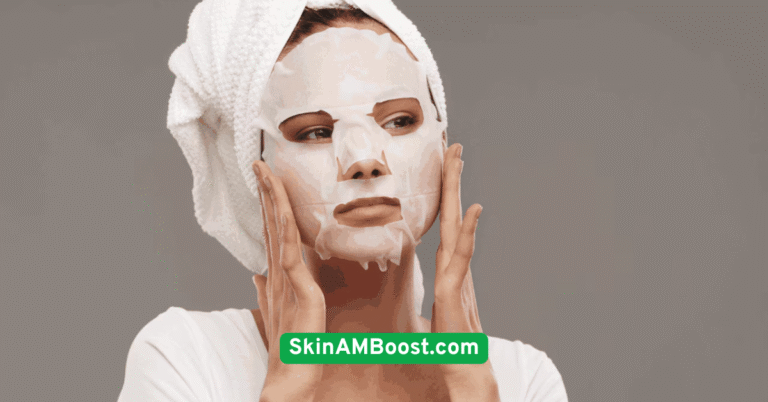15 Hydrating Skincare Tips for All Skin Types

In the next 15 sections, you’ll find practical, evidence‑based strategies to drench every skin type—dry, oily, combination, or sensitive—in lasting hydration. Each tip takes mere minutes, costs little, and pairs perfectly with a busy schedule. Ready to give your skin a long, cool drink? Let’s dive in!
1. Start Your Day with a Gentle, Hydrating Cleanser
A great routine begins at the sink. Harsh cleansers laced with sulfates or strong soaps can strip the skin’s lipid film, the natural layer that keeps moisture locked in. Switching to a sulfate‑free gel or creamy formula loaded with aloe vera, glycerin, or oat extract prevents that “squeaky‑clean” tightness many people mistake for freshnessMassage the cleanser over damp skin for about 30 seconds, using circular motions that encourage blood flow. Rinse with lukewarm—not hot—water to avoid dilating capillaries or wrecking barrier lipids. Pat dry with a soft towel; vigorous rubbing pulls at delicate facial skin and accelerates dryness.Finally, listen to your face: oily regions may love a lightweight foaming gel, while desert‑dry cheeks thrive on richer milks. Matching cleanser texture to skin needs is a small step with outsized glow returns.

2. Apply Skincare to Damp Skin
Water is a vehicle that helps humectants—ingredients like hyaluronic acid or glycerin—draw and hold moisture. When you apply serums or lotions while your face is still slightly dewy, you turbo‑charge absorption. Think of your skin like a sponge: a damp sponge pulls water in; a completely dry one repels it.After cleansing, resist the urge to towel off completely. Instead, leave a whisper of moisture on the surface, or mist a hydrating toner infused with rose water or chamomile. Within that golden 60‑second post‑wash window, layer on your serum and moisturizer.This tiny timing tweak locks in extra hydration without adding more products—and costs nothing. Over weeks, skin looks juicier and fine lines soften because cells stay plumper.

3. Use a Hydrating Toner or Mist
Forget the stingy, alcohol‑heavy toners of the past. Today’s hydration tonics are soft blankets loaded with humectants, soothing botanicals, and antioxidant perks. Spritzing a rose water or green‑tea mist sets the stage for every step that follows and delivers an instant pick‑me‑up during midday slumps.Hold the nozzle about eight inches away and let a fine cloud kiss your face; heavy droplets can run, wasting product. For an on‑the‑go refresh, stash a travel‑size bottle in your bag or desk drawer. Two quick pumps over makeup add a natural dew and calm wind‑blown or air‑conditioned skin.Budget hack: brew chamomile tea, cool it, and decant into a spray bottle. You’ll save cash, cut preservatives, and get a calming antioxidant bonus.

4. Layer Lightweight Hydrating Serums First
Serums are skincare’s powerhouses—small molecules, big results. A formula starring hyaluronic acid, niacinamide, or panthenol should be your first leave‑on layer after toning. Because serums are water‑based and feather‑light, they slide deep into the epidermis, saturating cells from within.Dispense a pea‑size amount, press (don’t rub) it into skin, and give it about a minute to nestle before topping with moisturizer. Pairing humectant serums with an occlusive cream later “sandwiches” water inside, prolonging plumpness.If you’re new to actives, start with a single hydrating serum morning and night. Let your skin acclimate; it will reward you with a smoother surface and less midday tightness.

5. Lock in Moisture with an Occlusive Moisturizer
Once water is inside, you need a seal. Creams rich in ceramides, shea butter, or squalane act like cozy comforters, preventing transepidermal water loss. Contrary to myth, oil‑free is not always better: even oily skin benefits from a lightweight lotion that contains barrier‑reinforcing lipids.Spread a nickel‑sized dollop over face and neck. For drier patches, press an extra dab. Nighttime is prime for thicker balms—the skin’s repair mode peaks while you sleep. Wake up with a quenched, supple complexion instead of a parched one begging for moisture.Fragrance‑free formulas are wisest for sensitive types. They hydrate quietly without risking redness or itching.

6. Never Skip Sunscreen (Yes, It Hydrates Too!)
UV exposure dehydrates by breaking down collagen and sapping natural oils. A daily broad‑spectrum SPF 30 or higher shields against water loss, hyperpigmentation, and premature wrinkles—while many newer mineral sunscreens double as silky moisturizers.Opt for lotions infused with antioxidants like vitamin E or green tea for an extra hydration buffer. Apply a generous nickel‑sized amount to face, neck, and ears. Let it sink for 60 seconds before makeup to avoid pilling.Reapply every two hours outdoors or after sweating. Your future self, free of sun spots and dryness, will thank you.

7. Incorporate Overnight Hydration Masks
Think of overnight masks as sleeping bags for your skin. Formulas rich in hyaluronic acid, peptides, or plant oils blanket the face, preventing evaporation and infusing nutrients as you dream.After evening cleansing and serum, smooth on a thin layer—more isn’t better. Wake up to softer, visibly plumper skin without an extra morning step. For oily or combination complexions, choose gel–cream masks that hydrate without suffocating pores.A twice‑weekly “sleep facial” often makes pricey spa visits unnecessary—proof that self‑care can be wallet‑friendly.

8. Drink Plenty of Water
Topical care shines brightest when paired with internal hydration. Water moves nutrients to cells and flushes toxins that dull your glow. Aim for eight standard glasses, adjusting for exercise and climate. If you dislike plain water, flavor it with citrus slices or mint.Foods matter too. Cucumbers, berries, watermelon, celery—produce with high water content—bolster your daily intake. Notice how skin feels less tight and lips chap less when you’re consistently hydrated inside and out.

9. Avoid Hot Water While Cleansing
Scalding showers might relax muscles, but they sabotage moisture levels. High temps melt the protective lipid layer, leaving skin vulnerable to dehydration and inflammation.Instead, use lukewarm water for washing and a brief cool splash at the end to tighten pores. Keep showers to 10 minutes. Your skin will retain more elasticity, and your utility bill may even shrink—a double win for budget‑conscious glow‑seekers.

10. Use a Humidifier at Night
Indoor heating and air conditioning suck humidity from the air, turning your bedroom into a desert. Running a small cool‑mist humidifier keeps ambient moisture above 40 percent, reducing overnight water loss from skin.Place it about three feet from your bed to avoid damp pillows, and clean weekly to prevent mold. Many users report fewer morning creases and a softer feel after just a week.Bonus: plants and sinuses love humidity too, so you’ll breathe (and glow) easier.

11. Add Oils to Your Routine if Needed
Facial oils aren’t one‑size‑fits‑all, but the right match can super‑charge hydration. Jojoba mimics sebum; rosehip delivers antioxidants plus a dry‑touch finish; marula cushions parched patches without clogging pores.Pat one to two drops over moisturizer at night to seal everything in, or mix a drop into foundation for daytime luminosity. Always patch‑test and introduce slowly to gauge compatibility.A small bottle lasts months, making oils a cost‑effective luxe touch.

12. Watch for Drying Ingredients
Scan labels for denatured alcohol, harsh sulfates, and high‑dose benzoyl peroxide—workhorses that can backfire by stripping moisture. If you can’t part with an acne treatment, balance it with barrier‑loving ingredients like ceramides and glycerin.Stick to the lower end of exfoliant percentages if you’re prone to redness. Gentle formulas preserve hydration while still delivering results.

13. Choose Products Based on Season
Skin doesn’t live in a vacuum; winter winds and summer humidity demand different textures. Swap to thicker creams and occlusive balms when heaters are blasting; flip back to gels and lightweight lotions in muggy months.Seasonal tailoring ensures comfort, reduces breakouts, and keeps hydration steady year‑round without bloating your product stash.

14. Exfoliate Gently Once or Twice a Week
Dead cells act like a thirsty sponge, blocking serums from soaking in. Alpha‑hydroxy acids (glycolic, lactic) dissolve bonds between dull flakes, while beta‑hydroxy acids (salicylic) slither into pores to clear congestion.Limit chemical peels or gentle enzyme masks to once or twice weekly. Follow with a rich moisturizer. You’ll notice products penetrate faster and skin takes on that glassy sheen—no harsh scrubbing required.

15. Don’t Forget Your Neck and Hands
These areas reveal dehydration and aging first. Extend every step—cleanser, serum, moisturizer, SPF—to the collarbone and backs of hands. For a budget boost, massage leftover product after each application instead of wiping it away.Slip on cotton gloves over hand cream at night once a week for spa‑level softness by morning. Consistent care keeps the whole canvas hydrated and youthful.

Conclusion
Hydration isn’t a luxury—it’s the baseline your skin needs to thrive. By pairing science‑backed ingredients with simple lifestyle tweaks, you can lock in moisture, reinforce your barrier, and unveil a naturally radiant complexion – without draining your wallet or calendar.
Start small: maybe tonight you’ll cleanse with lukewarm water and dab on a hyaluronic serum while your face is still damp. Tomorrow, toss a humidifier on your nightstand. Layer habits gradually, listen to your skin’s feedback, and celebrate every new hint of dewiness in the mirror.





